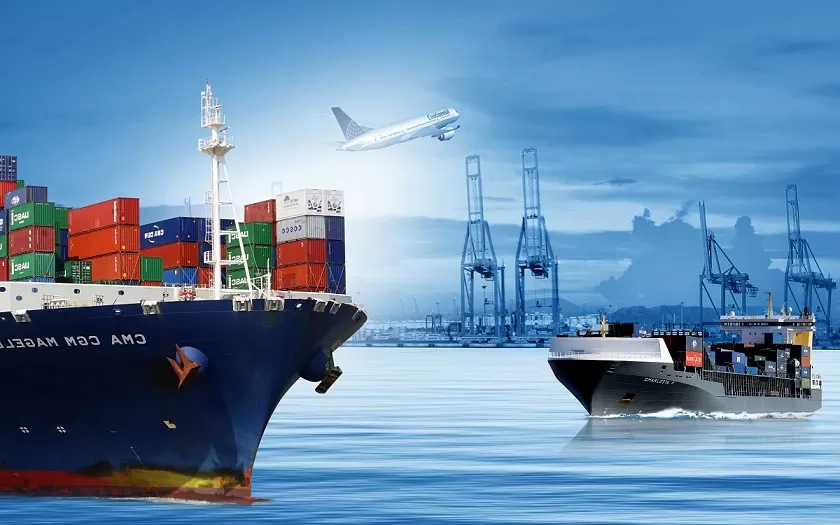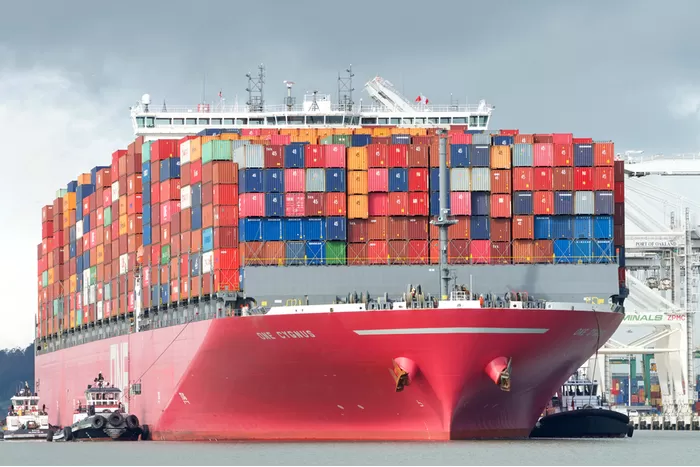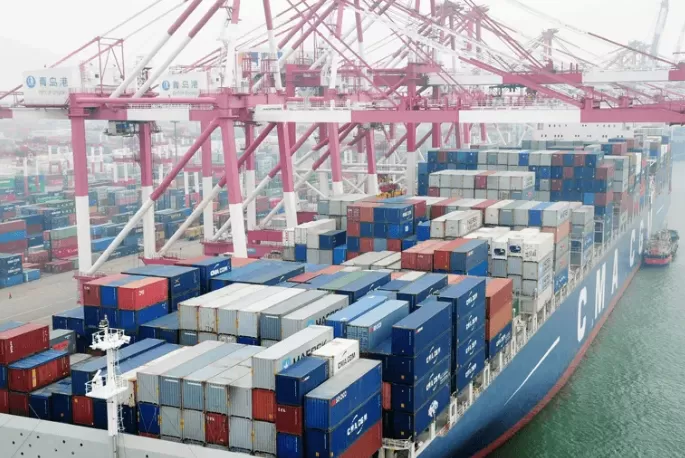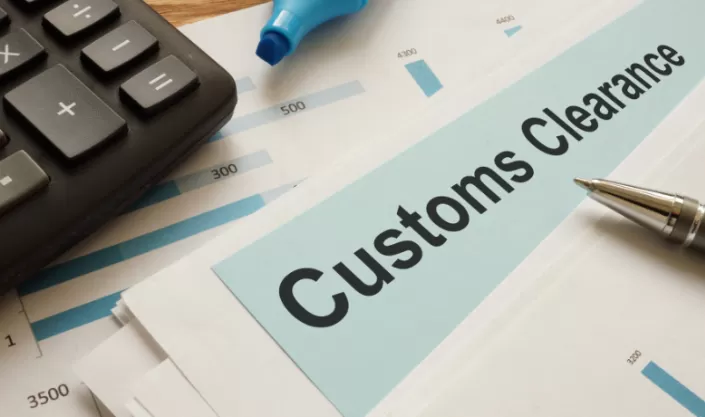Highlights — Quick answers
Typical door-to-door sea (FCL) from major Chinese ports to Atlanta: ~30–45 days (example range; depends on port & inland leg).
Air freight (urgent, high-value): 3–7 days door-to-door (example).
Sea+Express (sea-派) is the sweet spot for Amazon FBA small shipments: lower cost than air, better tracking than pure sea.
Use FCL if you fill ≥ 10–12 cbm or have heavy palletized loads; use LCL for irregular small batches but budget for higher per-unit handling.
Always compute landed cost before ordering: Product + Intl Freight + Duty + Import Fees + Drayage + Insurance + Domestic Handling = Landed Cost.
Downloadable assets to create: landed-cost spreadsheet, FBA checklist, carrier communication templates (recommend adding to your site).
Are you ready?
Get real-time quotes for Atlanta
Get Quotes
Table of contents
Introduction — who this guide is for
Transportation overview: sea, air, sea+truck, sea+express
Routes: all-water, west-coast+rail, air routes, sea+truck/sea+express flows
Sea freight deep dive — FCL vs LCL, transload, sample cost breakdown
Air freight deep dive — pricing mechanics, volumetric weight, practical tips
Sea+Truck & Sea+Express — when to use each, FBA fit
Door-to-Door vs Port-to-Port — responsibilities, cost and risk matrix
Customs & documentation — step-by-step checklist to avoid delays
Landed cost: exact formula + worked examples
Atlanta inland logistics: drayage, intermodal, last-mile considerations
Amazon FBA — recommendations for small and medium sellers
Templates & practical tools you can copy today
Case studies (two real-style examples)
FAQ (common, concise answers)
Introduction
This guide is written for procurement managers, cross-border e-commerce sellers (especially Amazon FBA small/medium merchants), and operations staff who need a practical, repeatable playbook for shipping goods from China to Atlanta. It assumes you want actionable advice — route choices with pros/cons, concrete checklists for customs, and templates you can use tomorrow. Numbers are illustrative: always validate with live quotes before committing.
Transportation overview
Short decision rule:
If speed > cost: choose air freight (or express couriers).
If cost > speed and volume is large: choose FCL sea + inland (sea+truck or rail).
If you need low cost for small parcels with some tracking: choose sea+express (sea).
If you want a middle ground for medium volume: choose LCL + drayage / intermodal.
Key cost drivers across modes: fuel surcharges, seasonal peak surcharges, port congestion, container availability, container type (reefer/HC), and local handling fees (pier/terminal charges, docs, ISF/AMS in the U.S.).
Routes — which physical paths will your cargo actually take?
Overview
There are four practical route categories to Atlanta:
All-water → East Coast (Savannah / Charleston / NY-NJ) → truck to Atlanta — common for full containers from Shanghai, Ningbo, Shenzhen. Best cost per cbm for large shipments.
West-Coast (LA/Long Beach/Oakland) → intermodal rail + truck → Atlanta — sometimes cheaper due to west-coast carrier competition; rail reduces inland trucking distance but adds intermodal handling.
Air (direct or one-stop) → ATL (Hartsfield-Jackson) — best for urgent/high-value shipments.
Sea+Express or Sea+Truck — hybrids: sea headhaul to port, then express or truck last-mile.
Sea — Sample average FCL rates to Atlanta
(All figures are illustrativ
| Origin (China) |
Typical routing (to ATL) |
20′ GP (USD) |
40′ GP (USD) |
40′ HQ (USD) |
Typical door-to-door transit |
| Shanghai (PVG) |
via Savannah → drayage to Atlanta |
$1,250 |
$2,550 |
$2,650 |
30–35 days |
| Shenzhen / Yantian |
via Charleston → drayage to Atlanta |
$1,250 |
$2,500 |
$2,650 |
32–38 days |
| Ningbo (NGB) |
via Savannah → drayage to Atlanta |
$1,100 |
$2,400 |
$2,500 |
30–36 days |
| Qingdao (TAO) |
via Charleston → drayage to Atlanta |
$1,200 |
$2,650 |
$2,750 |
33–40 days |
LCL pricing note: LCL ($80–$120 / CBM, depending on consolidation service and origin port.
Publishing t Place this table near a short explanation of what’s included (ocean freight only vs door-to-door), and mark the update date. Add a CTA: “Request live quote” for users who want current rates.
Air — Indicative freight rates to Atlanta (per kg) — 2025
(Rates vary by weight band, commodity, season and carrier capacity.)
| Origin airport (China) |
Indicative rate (≥100 kg) USD/kg |
Indicative rate (≥300 kg) USD/kg |
Typical transit (door-to-door) |
| Shanghai PVG → ATL |
$3.50 / kg |
$3.00 / kg |
5–7 days |
| Guangzhou CAN → ATL |
$3.80 / kg |
$3.20 / kg |
6–8 days |
| Hong Kong HKG → ATL |
$4.00 / kg |
$3.30 / kg |
4–6 days |
| Beijing PEK → ATL |
$3.60 / kg |
$3.10 / kg |
6–9 days |
Chargeable weight reminder: Carriers bill the greater of actual weight or volumetric weight. Common volumetric formula:
Volumetric kg = (L × W × H in cm) ÷ 6000 — use this to compare actual vs chargeable weight before quoting.
Publishing tip: Add a short calculator widget or a visible formula so users can instantly check volumetric weight. Note whether these rates assume airport-to-door or door-to-door service (Amazon FBA door-to-door shipping costs explained).
freight forwarding
Get real-time quotes for Atlanta
Get Quotes
Air freight — fastest option (direct & one-stop)
Typical origin airports: Shanghai (PVG), Guangzhou (CAN), Hong Kong (HKG), Beijing (PEK).
Typical door-to-door transit times to ATL: 4–9 days depending on direct vs one-stop routing, customs, and trucking at origin/destination.
PVG (Shanghai) → ATL (direct/one-stop)
Realistic door-to-door window: ~5–7 days when flights are available and customs/ground pickup are booked properly. Use this for urgent restocks and high-value SKU replenishment.
CAN (Guangzhou) → ATL
Typical door-to-door: ~6–8 days; direct freighter options are less common than via hubs (e.g., ICN/LAX/ORD), so expect one-stop transit or consolidation.
HKG (Hong Kong) → ATL
HKG often shows some of the shortest air door-to-door times to ATL because of frequent carrier connections; ~4–7 days is a reasonable planning window. Flexport examples for HKG→ATL show port-to-port 7–9 days depending on service, add day(s) for origin pick/clearance.
PEK (Beijing) → ATL
Plan ~6–9 days door-to-door depending on routing and ground handling times at both ends.
Practical notes: airlines charge by actual vs volumetric weight (volumetric divisor typically 6000 cm³/kg). For air to ATL, build in 24–48 hours for export handling and 24–72 hours for U.S. customs clearance + drayage to final address.
Sea freight — typical full-container routes (FCL) to Atlanta via East Coast ports
Key origin ports: Shanghai (PVG), Shenzhen (Yantian/SZX), Ningbo (NGB), Qingdao (TAO).
Primary U.S. gateway ports for Atlanta: Savannah (compare with shipping to other East Coast ports like Baltimore) (USSAV) and Charleston (USCHS). After port arrival cargo moves by truck or rail to Atlanta.
Typical door-to-door transit times (examples by origin):
Shanghai → Savannah → Atlanta: ~30–35 days door-to-door when using direct/short-transit east-coast sailings and prompt port pickup. Flexport search samples show 30–32 day FCL options from Shanghai to Savannah in many schedules.
Shenzhen / Yantian → Charleston → Atlanta: ~32–38 days — Pearl River Delta origin often uses services that call southern China and then head across for East Coast transshipment; allow extra days for regional feeder/stow.
Ningbo → Savannah → Atlanta: ~30–36 days in standard services; some consolidators and online quote tools show similar 30–48 day ranges depending on sailing schedules and consolidation (LCL).
Qingdao → Charleston → Atlanta: ~33–40 days — northern China sailings sometimes take slightly longer due to initial port calls and transfer legs; plan nearer the upper bound in peak season.
How the total breaks down (typical):
Ocean headhaul: 18–28 days (varies by direct vs transshipment);
Port operations & customs clearance: 2–7 days (may be longer in congestion);
Drayage / inland move Savannah/Charleston → Atlanta: 1–4 days for trucking (urban same-week), or 3–7 days if intermodal / rail handoffs or weekend/appointment delays apply.
Planning guideline: for FCL to Atlanta, budget 30–45 days door-to-door as a safe window; aggressively planned schedules can hit the low-30s but don’t count on it during peak season or when capacity is constrained. Sources show published FCL sailing times and sample marketplace quotes in these ranges.
Sea + Express — best balance for small parcels & FBA small lots
What it is: sea headhaul to a U.S. port (usually East Coast) + express courier tail-leg (UPS/FedEx/DHL) or last-mile small-parcel parcelization from gateway hub to consignee/FBA. This gives tracking and faster city delivery for parcels that would be slow if kept as LCL full-consolidation.
Typical door-to-door timing examples (small parcels to ATL / FBA): ~20–30 days from origin to FBA or final address. Practical factors:
Sea headhaul: 18–28 days to Savannah/Charleston (same as FCL headhaul).
Port clearance and parcelization to express: 2–7 days (depends on how quickly the consolidator can strip, label and hand to courier).
Express final delivery: 1–3 days depending on courier SLA.
So, plan ~20–30 days door-to-door for sea+express shipments that start in major Chinese ports and are consolidated for express tailing. FluentCargo and other route guides show sea headhaul times consistent with the above, and operators running sea+express commonly advertise this time-to-door advantage vs raw LCL.
FBA tip: sea+express is widely used by FBA sellers who need unit-level tracking and faster processing into Amazon inbound — but verify courier max dimensions and weight per parcel and pre-label at origin to avoid rework fees.
Sea + Truck — container lands → trucked to Atlanta
What it is: container arrives Savannah/Charleston; after clearance a drayage carrier or long-haul truck moves it directly to an Atlanta warehouse or distribution center — used for pallet loads and bulk deliveries that exceed parcel limits.
Typical door-to-door timing examples: ~30–45 days depending on port calls and pickup scheduling.
Ocean headhaul: ~18–28 days (same as FCL).
Port clearance + container release + appointment: allow 1–5 days depending on terminal appointments and chassis availability.
Truck transit Savannah/Charleston → Atlanta: 1–2 days typical for direct trucking (weather/appointment permitting); if rail intermodal is used from West Coast, add 3–7 days for rail leg.
Operational notes: book drayage/long-haul trucking in tandem with vessel ETA to lock an appointment window and avoid detention/demurrage charges. If you're moving multiple containers on a rotation, negotiate weekly pickup slots to lower costs and reduce dwell time.
Door-to-Door
Get real-time quotes for Atlanta
Get Quotes
West Coast gateway + rail option (LA/LB/Oakland → intermodal → Atlanta)
When it appears in planning: used when west-coast ocean rates + U.S. rail to the southeast are more economical than direct east-coast sailings — or when consolidation hubs are in the Pearl River Delta and routing via LA works better.
Typical door-to-door timing (example): ~25–40 days.
Ocean headhaul to LA: ~12–22 days (typically faster than all-water to east coast).
Intermodal (rail) transit time LA → Atlanta: ~7–12 days depending on service and rail routing; plus drayage/terminal on both ends 1–3 days.
Total door-to-door can be ~25–40 days — sometimes faster than all-water east-coast if rail windows are tight and schedules line up. Note: recent industry disruptions (seasonal, geopolitical or Red Sea diversions) can cause variability; always verify current sailings and rail schedules.
Door-to-Door vs Port-to-Port — timing differences and who handles what
Port-to-Port (carrier handles only sea leg): you should expect only the ocean leg timing from carrier schedules (e.g., 18–28 days Shanghai→Savannah). Add port pickup + drayage + customs time yourself — typically 3–10 days additional to reach Atlanta door.
Door-to-Door (forwarder handles end-to-end): published door-to-door windows above include the forwarder’s handling time; they will book origin pickup, export clearance, ocean/air leg, import clearance, and last-mile delivery. For planning, door-to-door quotes are preferable when you lack a local team because they internalize many handoffs and give a single ETA.
Practical scheduling difference: a port-to-port booking at the same sail will frequently show ~3–10 days less on the carrier’s “ocean transit” estimate compared to the door-to-door ETA because the latter includes extra operations at origin/destination.
Amazon FBA — routes & realistic timings for small/medium sellers
Small sellers (small cartons, frequent restock):
Preferred route: Sea+Express or Air (if urgent).
Typical timing: Sea+Express ~20–30 days; Air ~4–9 days. Sea+express gives tracking and lower per-unit cost vs air; air gives speed but at higher unit cost.
Medium sellers (larger pallets / periodic large replenishment):
Preferred route: LCL consolidation to sea + sea+truck or small FCL if volume justifies.
Typical timing: LCL → port → drayage to Atlanta / prep → FBA usually ~30–45 days; FCL door-to-door with direct drayage ~30–40 days.
Operational checklist for FBA flows (timing & compliance):
Pre-label at origin to avoid US prep fees — saves 1–3 days per shipment in many cases.
Confirm Amazon inbound routing (some warehouses reject certain service types). Booking FBA appointments: allow 3–7 business days lead time after freight arrives and is staged for delivery.
For sea+express: ensure the consolidator provides courier AWB/track numbers before attempting FBA appointment; couriers often need 24–48 hours to scan and schedule.
How to schedule transit reliably — practical timing rules
Add buffers: for sea FCL/LCL add +7–14 days buffer in planning for paperwork, port congestion and appointment windows.
Peak season: Q3–Q4 (pre-holiday) and pre-Chinese New Year capacity crunches can add +7–21 days unpredictably; book earlier. Recent industry alerts and market shifts (carrier capacity reallocation / geopolitical events) can widen these windows.
For FBA: work backwards from your target on-shelf date — if you need replenishment inside 30 days, choose sea+express or air; if you can wait 30–45 days, FCL or LCL is usually more economical.
Customs & documentation — step-by-step checklist (do these before the ship sails)
Core documents
Commercial Invoice — must match purchase order, include HS code, country of origin, unit value and total value.
Packing List — one per shipment showing dimensions, weights, palletization, carton counts.
Bill of Lading (B/L) for sea or Air Waybill (AWB) for air.
Export Customs Declaration — done in China; forwarder usually files.
ISF (10+2) / AMS — U.S. advance filing obligations for ocean shipments; forwarder usually handles ISF.
Importer Security Filing and other agency filings (e.g., FDA, USDA) as required for regulated goods.
Certificates (e.g., CO, Phyto, testing certificates) if required.
Practical rules to avoid holds
Use correct HS codes and accurate values — wrong HS equals delays and penalties.
Reconcile invoice vs packing list — mismatches are the top cause of inspections.
Engage a licensed customs broker in the U.S.; they can pre-validate docs and assign an estimated duty.
Case studies (concise, instructive)
Case A — E-commerce seller, Shenzhen → Atlanta (sea+express)
Problem: frequent small restocks (10–30 cartons), urgent during Q4.
Solution: consolidated sea container to Savannah, cleared and reconsigned to express courier for FBA dispatch.
Result: cost per unit cut by ~60% vs rush air, tracking for each carton; two week average lead time.
Case B — Manufacturer, Ningbo → Atlanta (FCL + sea+truck)
Problem: regular monthly 40' load with heavy pallets, needed stable landed cost.
Solution: FCL direct to Savannah, scheduled drayage carrier with fixed weekly pickup slots.
Result: minimized demurrage, predictable weekly deliveries, reduced inland unit cost via negotiated drayage contract.
Which is faster to ship from China, DHL or FedEx?
For most international shipments from China (especially to Europe), DHL is often slightly faster by half a day or so due to its strong global network and efficient customs handling.
However, for shipments ending in the United States, FedEx can have an edge because of its massive domestic network.
The best way to know for sure?
Always check the online quote tool on both the DHL and FedEx websites. Input your exact details for the most accurate delivery time and price.
Amazon FBA
Get real-time quotes for Atlanta
Get Quotes
FAQ
What exactly are demurrage and detention — and how do I avoid paying them?
Demurrage is a port/terminal charge for leaving a container at the terminal past free time; detention is a charge for keeping the container outside the terminal beyond the allowed period. Avoid both by booking truck appointments early, returning containers on time, monitoring ETA vs free time, and negotiating a reasonable free-time window with your carrier or local agent.
When do I need a Customs Bond for imports into the U.S.?
Any commercial import cleared with a customs entry requires a bond—either a continuous bond (best for ongoing importers) or a single-entry bond for one shipment. Use a continuous bond if you import frequently (it’s more cost-effective); ask your customs broker to recommend which bond suits your import cadence.
How should I insure high-value or fragile cargo shipped by sea?
Buy “all-risk” marine cargo insurance that covers Named Perils and total loss; for fragile items add a clause for handling damage and include accurate packing descriptions and photos. Insure on CIF/CIF+ basis if you want the carrier’s insured value included, but verify deductibles and exclusions before signing.
What are the most common carrier/forwarder surcharges to watch in quotes?
Look for BAF/CAF (fuel), PSS (peak season), THC (terminal handling), AMS/ISF filing fees, security charges, and congestion surcharges. Always ask for a detailed line-item quote and the surcharge triggers (e.g., applied by date, weight, or port conditions).
How do I handle oversized or heavy cargo that won’t fit in a standard container?
Plan for special equipment—flat racks, open tops, or breakbulk—and contact NVOCCs/liners that handle project cargo. Provide exact dimensions and lifting points early so carriers can reserve space, arrange port crane services, and quote multi-leg handling charges.
What checks should I run before hiring a freight forwarder (see our guide on how to pick the best one)?
Verify a physical office and local presence at both origin and destination, request references for similar lanes, confirm IATA / FIATA / customs brokerage credentials, and test responsiveness with a mock quote request. Ask about their contingency plan for delays and request a sample detailed cost breakdown.
How do I manage perishable or temperature-sensitive shipments to Atlanta?
Use reefers with temperature logs and choose carriers experienced in perishable lanes; specify temperature set points, pre-cooling, and monitoring during booking. Include clear SOPs for acceptance at origin and receiving at destination to avoid spoilage during handoffs.
Should I use FOB, CIF or DDP when shipping to Atlanta—and why?
Choose FOB if you want control over international freight procurement; CIF if you prefer seller arranges main carriage and insurance; DDP (understand the key differences between DAP and DDP) if you want the seller to deliver duty-paid to your door and avoid handling import formalities. Match the Incoterm to your capability and willingness to manage customs, inland transport and risk.
What immediate steps if a container is lost or seriously delayed?
Notify your forwarder and carrier immediately, file a formal claim and request the carrier’s incident report, confirm insurance coverage and notify the insurer, and secure alternative routing for critical stock (air or expedited LCL) to reduce business impact. Keep all documentation—B/L, cargo photos, correspondence—for claims.
How can I reduce landed cost without compromising delivery reliability?
Consolidate SKUs and shipments where feasible, negotiate multi-shipment contracts with carriers/drayage providers, pre-label and pre-prep goods at origin to cut U.S. handling, and optimize Incoterms to shift responsibilities efficiently. Regularly audit fees on invoices (detention, demurrage, obscure surcharges) and re-negotiate or audit underperforming service providers.
Exploring Other Major US Logistics Hubs?
While Atlanta is a key Southeast distribution hub, understanding routing to other major centers can optimize your supply chain:
East Coast Ports: New York | Baltimore
West Coast Gateways: Los Angeles | Portland
Midwest Hubs: Chicago | Kansas City
Southern Centers: New Orleans | Miami
Compare All Options
Each destination offers unique advantages depending on your cargo type and final distribution needs. Use our comprehensive US shipping guide to develop an optimal logistics strategy.

 EN
EN
 FR
FR
 ES
ES
 JA
JA
 PT
PT
 RU
RU
 AR
AR










